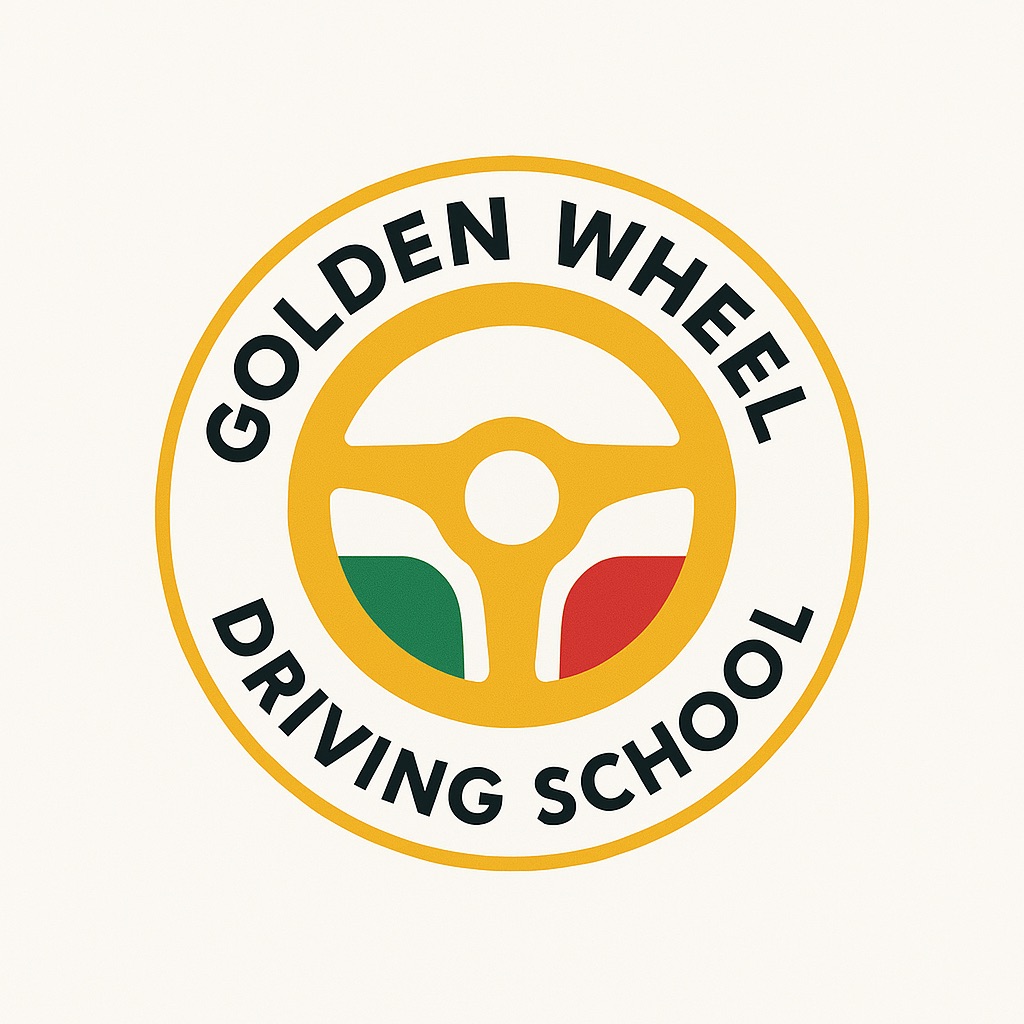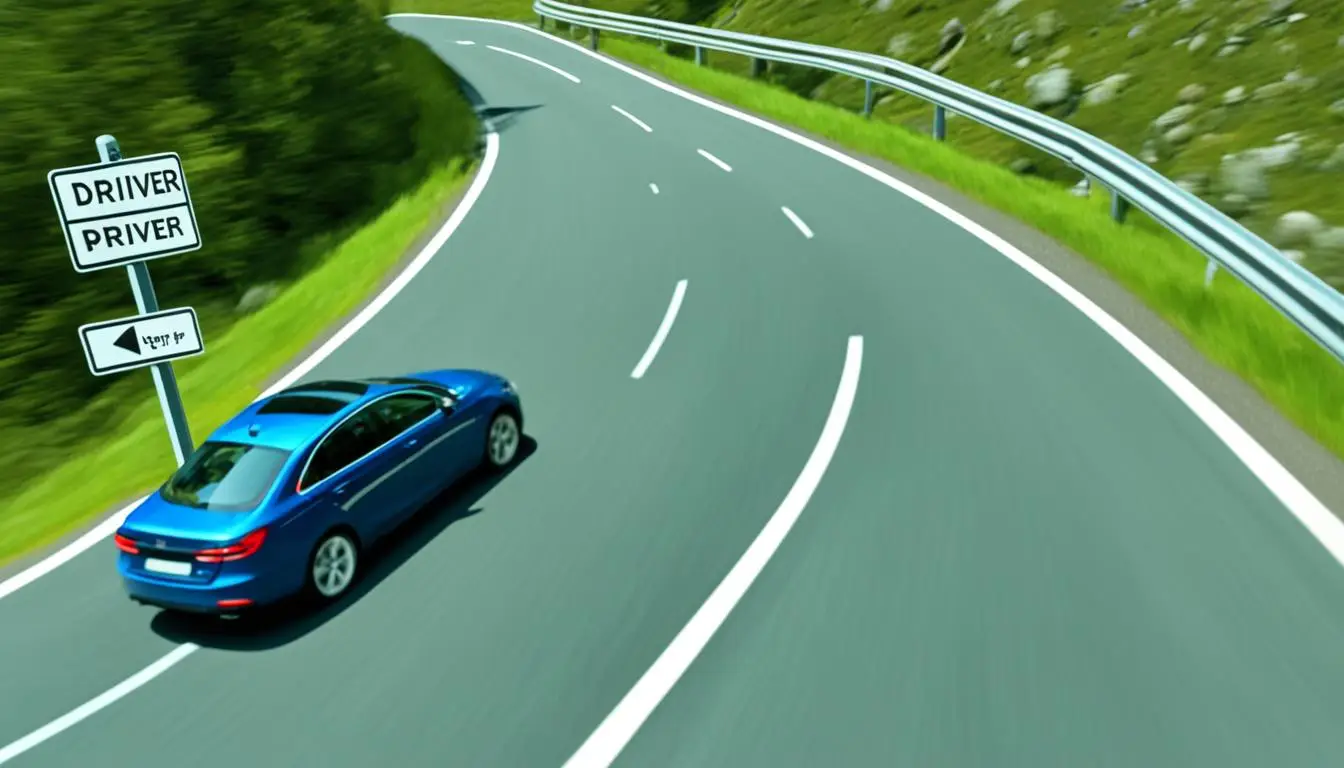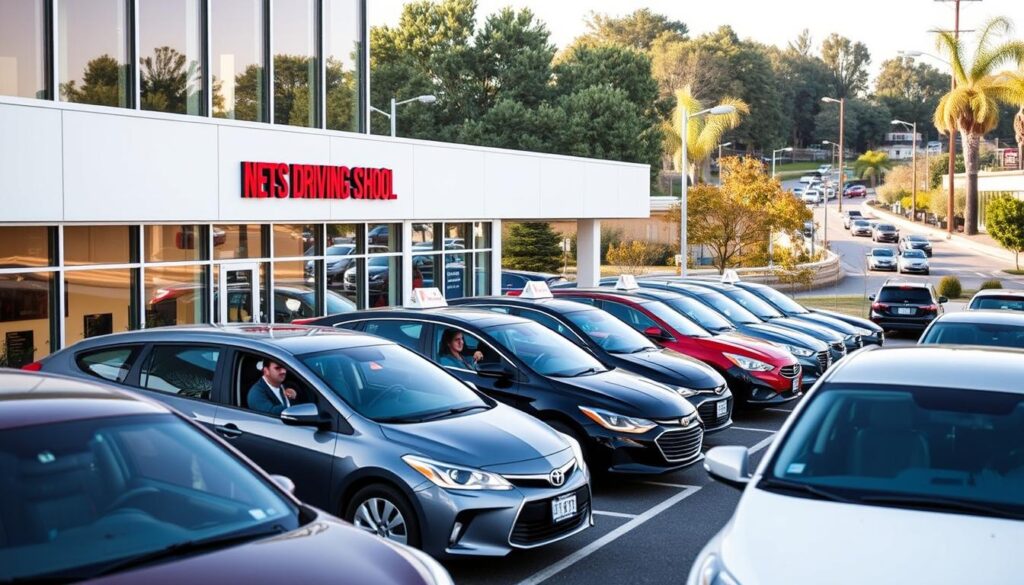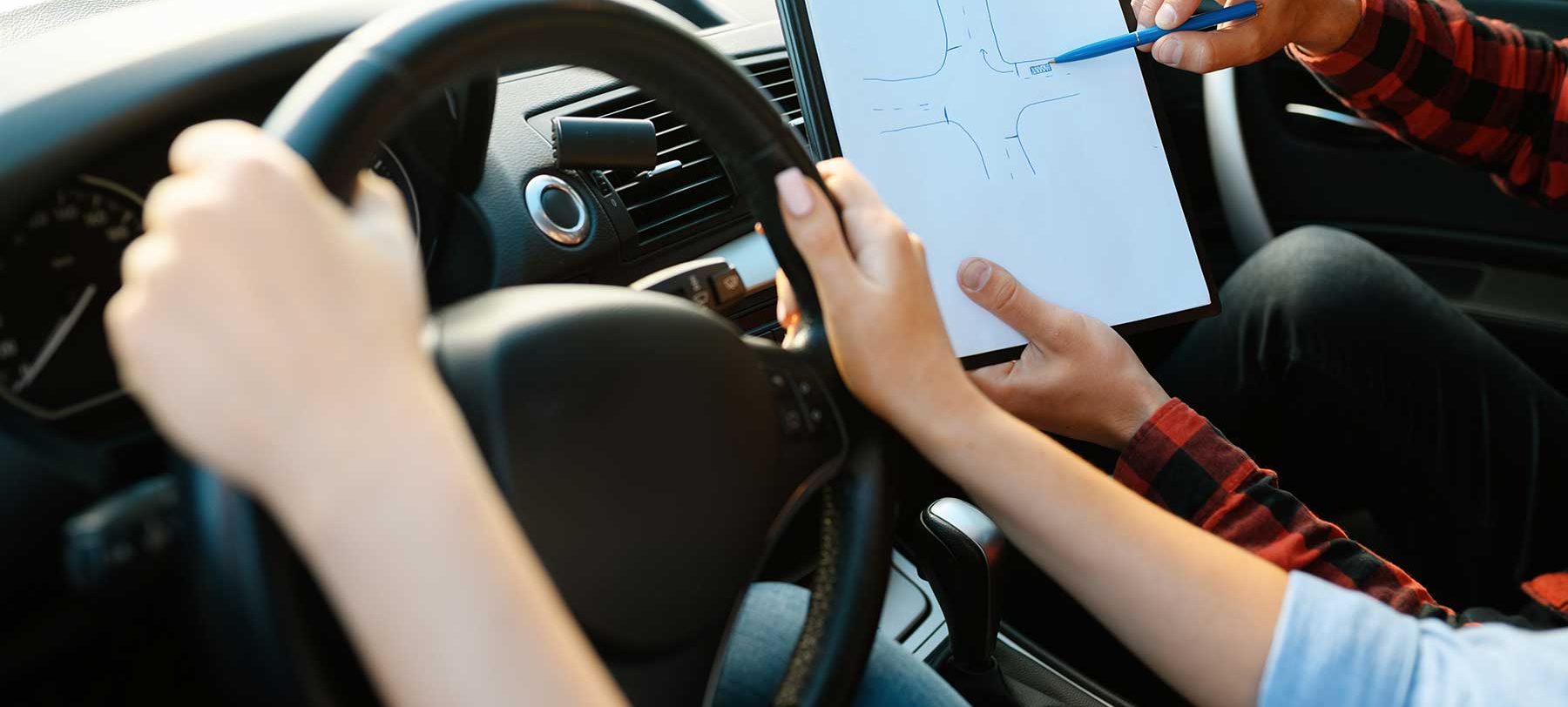common mistakes new drivers make
Starting to drive can be both exciting and scary for new drivers. It’s key to know the mistakes that can put you and others at risk. This article will cover the 7 biggest mistakes new drivers often make. It will also offer tips to help you drive safely and with confidence.
Key Takeaways
- Develop a keen awareness of your vehicle’s blind spots to avoid collisions.
- Maintain a safe following distance and avoid tailgating to ensure ample reaction time.
- Minimize distractions and resist the temptation to use your phone while driving.
- Properly signal lane changes and turns to communicate your intentions to other drivers.
- Stay within the speed limit and adjust your driving to match the prevailing road conditions.
Overlooking Blind Spots
New drivers often forget to check their blind spots. These are areas around your car you can’t see in your mirrors. Not checking them can be very dangerous.
Techniques for Checking Blind Spots
It’s key to check your blind spots before you change lanes or turn. Here are some ways to keep an eye on them:
- Perform a quick head check: Turn your head and shoulders to the side to visually scan the blind spot area before making a lane change.
- Use your mirrors effectively: Adjust your side mirrors to minimize blind spots and provide a wider view of your surroundings.
- Maintain awareness of other vehicles: Stay alert to the presence of other cars, motorcycles, or cyclists that may be in your blind spots.
Adjusting Mirrors for Better Visibility
Adjusting your mirrors is also crucial. It helps reduce blind spots and improves your view on the road.
Make sure you can just barely see the side of your car in the side mirrors. This setup helps you see more around you.
| Blind Spot Tip | Description |
|---|---|
| Head Checks | Turning your head and shoulders to visually scan the blind spot area before making a lane change. |
| Mirror Adjustment | Adjusting your side mirrors to minimize blind spots and provide a wider view of your surroundings. |
| Awareness of Others | Staying alert to the presence of other vehicles, motorcycles, or cyclists that may be in your blind spots. |
“Checking your blind spots is a critical safety habit that all drivers, especially new ones, should develop.”
Speeding and Reckless Driving
As a new driver, it’s key to know the risks of speeding and reckless driving. These actions can lead to losing control, more accidents, and serious legal trouble. A top new driver tip is to always follow speed limits and drive safely.
Speeding cuts down your reaction time and makes handling unexpected road situations tough. Driving mistakes to avoid include going over the speed limit, cutting through traffic, and making sudden moves. Instead, beginner driving advice is to drive at a steady speed and keep a safe gap from others.
Also, safe driving tips for new drivers mean watching out for dangers, looking ahead, and knowing what’s around you. Common driving errors like not giving way or missing blind spots can be prevented by using these tips.
At the end, first-time driver guidance stresses the need for responsible driving and driving safety for beginners. By avoiding driving mistakes and focusing on safety, new drivers can gain the skills and confidence to drive well.
“Driving is a privilege, not a right. Treat it with the respect and responsibility it deserves.”
Remember, driving school tips often highlight the dangers of common driving errors like speeding and reckless driving. By listening to this advice and driving safely, new drivers can dodge risks and stay safe.
Distracted Driving
As a new driver, staying focused is key. Distracted driving, especially texting and driving, is a big risk. It’s important to keep your eyes on the road at all times.
The Dangers of Texting and Driving
Texting while driving is very dangerous. It takes your attention away from the road and your hands from the wheel. According to the National Highway Traffic Safety Administration (NHTSA), texting while driving increases the risk of a crash by 23 times. It’s not safe.
Minimizing In-Car Distractions
- Keep your phone out of reach, preferably in the glove compartment or the backseat, to avoid the temptation to check it while driving.
- Adjust your music, climate control, and other settings before you start your journey to avoid fiddling with them while in motion.
- Avoid eating, drinking, or engaging in other activities that can divert your attention from the road.
- Speak with passengers to ensure they don’t distract you from the task of driving.
Remember, safe driving is your top priority as a new driver. By staying focused and avoiding distractions, you can avoid mistakes and keep everyone safe.
common mistakes new drivers make
As a new driver, knowing the common mistakes can keep you and others safe on the road. It’s important to learn these mistakes to drive safely and with confidence.
One big mistake is neglecting vehicle maintenance. It’s important to check your car’s fluids, tires, and more regularly. This is a legal must and keeps you safe on the road. If you ignore these checks, you might face unexpected breakdowns. This could make it hard to control your car and react to road changes.
Another mistake is improper signaling. Not using turn signals or not using them early can confuse other drivers. This increases the chance of accidents. Learning to use turn signals correctly is a simple way to tell others of your plans and stay safe.
- Regularly inspect your vehicle’s fluid levels, tires, and other key components to ensure roadworthiness.
- Always use your turn signals well in advance when changing lanes or turning to avoid surprising other drivers.
- Be mindful of your surroundings and yield the right-of-way when required to avoid collisions.
- Maintain a safe following distance from the vehicle in front of you to have adequate reaction time.
By knowing and fixing these mistakes, new drivers can drive safely and with confidence. Safe driving is a personal and shared responsibility on the road.
“The true secret of safe driving is anticipation, not reaction. Stay alert, be prepared, and always expect the unexpected.”
Improper Signaling
As a new driver, learning how to signal properly is key. It might seem simple, but not signaling can lead to risky situations. Not using turn signals can risk your safety and others’, and it’s easy to avoid these mistakes.
The Importance of Using Turn Signals
Using turn signals is a basic skill that makes roads safer for everyone. They tell other drivers you plan to turn or change lanes. By always using them, you lower the chance of accidents and keep traffic moving smoothly.
- Turn signals help other drivers know what you’re doing, letting them adjust their speed and position.
- Signal early (at least 100 feet or 30 meters) so others have time to react.
- Signaling is not just safe; it’s also the law in most places.
| Signaling Correctly | Signaling Incorrectly |
|---|---|
|
|
Learning to use turn signals right helps new drivers dodge common mistakes. It makes driving safer for everyone on the road.
Failure to Yield Right of Way
As a new driver, knowing how to yield the right-of-way is key. It helps avoid dangerous situations and accidents. We’ll look at key times you must yield for safety.
Intersections and Crosswalks
At intersections and crosswalks, new drivers often find it hard to yield. Always slow down, look for traffic, and let pedestrians or other vehicles go first. This means letting vehicles already in the intersection go and pedestrians cross safely.
Turning Left
Turning left requires yielding to oncoming traffic. Wait until it’s safe to turn without blocking or risking others. This keeps everyone safe.
Merging and Lane Changes
Merging or changing lanes can be tough for new drivers. Always check your blind spots, signal turns, and yield to other cars in the lane. This makes changing lanes safer and smoother.
Yielding the right-of-way is a must for safety and the law. It helps new drivers get better at navigating roads safely.
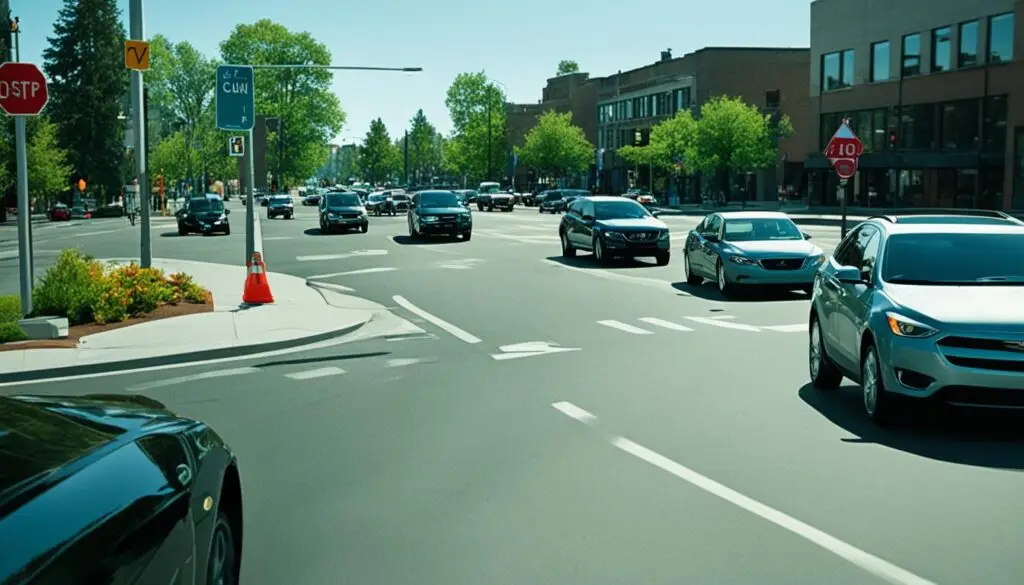
| Driving Scenario | Right-of-Way Considerations |
|---|---|
| Intersections and Crosswalks | Yield to pedestrians and vehicles that have already entered the intersection. |
| Turning Left | Yield to oncoming traffic going straight. |
| Merging and Lane Changes | Yield to vehicles already in the lane you’re merging into or moving to. |
Tailgating and Following Too Closely
New drivers often make the mistake of tailgating, following too closely to the car ahead. This risky move raises the chance of rear-end crashes. It also shows a lack of knowledge about safe distances. It’s key for new drivers to keep a safe gap to react and stop in time.
Safe Following Distances
The “three-second rule” is a good guideline for new drivers. This means keep at least three seconds between you and the car in front. Choose a road feature to watch, like a sign or tree. When the car ahead passes it, start counting “one-thousand-one, one-thousand-two, one-thousand-three.” If you hit the object before finishing counting, you’re too close. You should then give more space.
Weather, road conditions, and the size of your vehicle can change how far you should follow. In bad weather or on dangerous roads, add an extra second or two to your distance. This gives you more time to react and stop.
| Driving Condition | Recommended Following Distance |
|---|---|
| Ideal Weather and Road Conditions | 3 seconds |
| Rain, Snow, or Icy Conditions | 4-5 seconds |
| Large Vehicles (Trucks, RVs, Buses) | 4-5 seconds |
By sticking to these safe driving tips and keeping a good distance, new drivers can cut down on rear-end crashes. This makes driving safer for everyone.
“Maintaining a safe following distance is one of the most important habits a new driver can develop to ensure the safety of themselves and others on the road.”
Neglecting Vehicle Maintenance
Keeping your car in good shape is key to safe and reliable driving. It’s often overlooked by new drivers. Make sure to keep up with routine maintenance to avoid problems on the road.
Checking your tires is a must. Make sure the pressure and tread depth are right for good grip and stopping power. Bad tires can make your car hard to control and increase the risk of accidents.
Don’t forget about oil changes. Regular oil changes keep your engine running smoothly and save you money on big repairs later. Skipping this can lead to engine damage and leave you stranded.
Brakes are vital for safety. Make sure they’re checked and serviced often. Your brakes should have enough thickness and the fluid level should be right for safe stopping. If you ignore brake problems, you might not be able to stop in an emergency.
- Check tire pressure and tread depth regularly
- Change oil at recommended intervals
- Inspect and service brakes as needed
- Replace worn or damaged parts promptly
- Follow the manufacturer’s recommended maintenance schedule
Looking after your car helps keep you safe and extends its life. Remember, a well-maintained car is key for new drivers to be responsible.
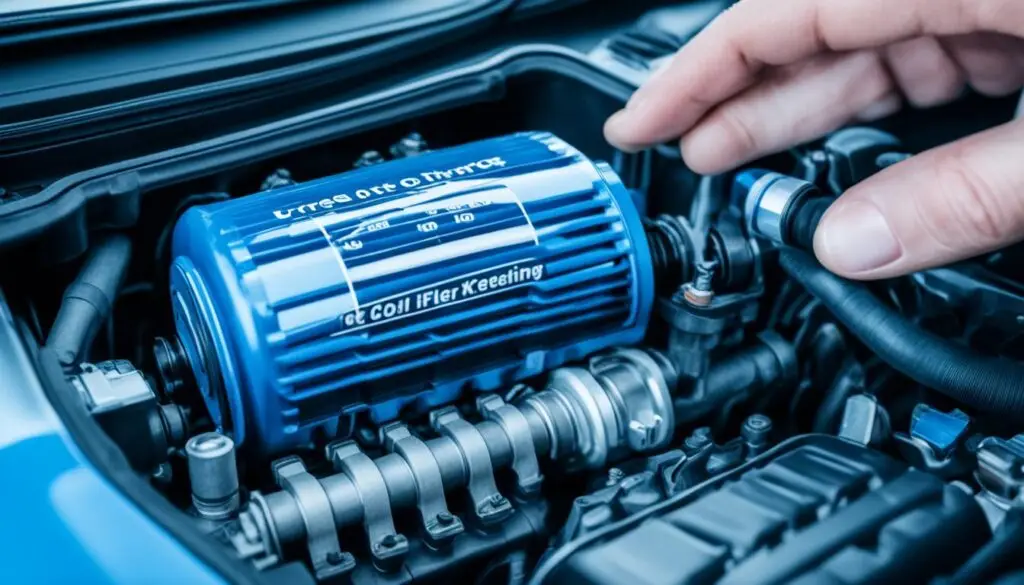
Driving Under the Influence
Driving while under the influence of drugs or alcohol is a huge mistake. It risks the driver, passengers, and others on the road. The outcomes can be severe, like heavy fines, losing your license, or even going to jail. In the worst cases, it can lead to accidents that change lives forever.
Consequences of Impaired Driving
Being impaired makes it hard to judge, react, and control the vehicle safely. These drivers often speed, ignore red lights, and make bad choices. This puts everyone at risk. The legal and financial fallout from a DUI can be huge, with fines, losing your license, and even jail time.
Alternatives to Driving Under the Influence
There are safer ways to avoid driving while under the influence. You can ask a sober friend to drive, use a ridesharing service, or take public transport. Choosing these options helps prevent the bad outcomes of impaired driving. It keeps you and others safe and avoids the serious effects of a DUI.
